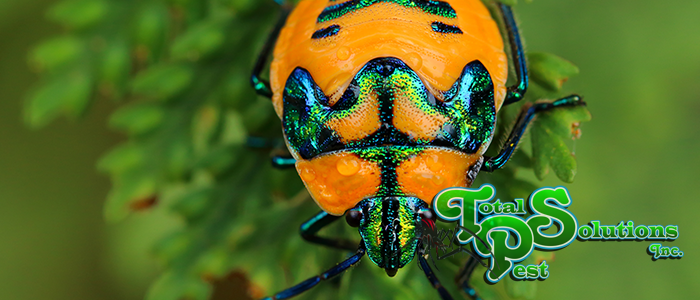
Why are Insects Called Bugs?
Usually, when we write an article, we’re talking about entomology – The study of insects. Today we’d like to talk about etymology instead! It happens every so often that somebody asks us where the word “bug” comes from, and it’s quite a story. Tracing down the exact origin of the word is tough… But there are some historical clues. Did you know that “bug” didn’t always refer to insects? It’s true! This article will cover these and more interesting facts about bugs and their history.
The First Use of Bug
Bug is a very old word. When was the word bug used for the first time? A few centuries ago. Bug – Then written as ‘Bugge’ – Makes its first appearance in the Wycliffe Bible in the mid-1300s. This was one of the first English translations of scripture, and “Bugge” appears in the following passage:
“As a bugge either a man of rags in a place where gourds wexen kepith nothing, so ben her goddis of trees.” Now, this passage means, “As a bug or a man of rags in a place where gourds grow guards nothing, so are their gods of wood,” and comes from a part of the Bible no longer in use… But it didn’t refer to insects.
It talked about hobgoblins and scarecrows. A scarecrow in a garden of cucumbers isn’t very useful, so that was probably the point of the passage. This original use of “bug” was common until the 17th century! For hundreds of years, “bug” meant a spirit or scarecrow or the act of being frightening.
The Modern Use of Bug
Today, “bug” describes insects of the order Hemiptera. These insects have sucking mouthparts, like wheel bugs and bed bugs. In fact, the first insect ever called a “bug” was the bed bug! As bed bugs feed on sleeping victims, people waking up covered in bites may feel like they’d had a visit from a mischievous spirit. This reference was so common that it stuck when Carl Linnaeus established the taxonomical system. The bed bug was classified as a “true bug,” and insects with sucking parts were classified.
Interestingly enough, mosquitoes aren’t true bugs! Though it seems as though they have sucking mouthparts, the truth is even stranger! They have six specialized pieces for drawing up blood rather than a true proboscis. They aren’t part of the Hemiptera order.
An Even Newer “Bug”
Over time, the word meant more than just creepy crawlies with straws for mouths. Since insects can be such pests, “bug” meant something bothersome. Much in the way a fly buzzes around your head trying to find food, a chatty co-worker or wild car alarm can bug you. There’s some debate surrounding one of the newest meanings of the word, though. Computer bugs are always a hot debate, aren’t they?
The story – That some insist is just a myth – Goes that in 1947, the Mark II computer at Harvard broke down. At around 3:45 PM, engineers discovered a moth that had flown into the computer and caused a short circuit. They attached the moth to a piece of notepaper, and that page is still on display at the Smithsonian National Museum of American History. Next, the engineers wrote a little epithet:
“First actual case of bug found.”
What a thing to write! But they probably wrote it as a little joke. The word “bug” has been used for something going wrong with machines since the late 1800s. But, presumably, this was the first time an insect was actually responsible! If you want to learn more about bugs, and how to prevent them, give our website a visit.
continue reading
Related Posts
Davenport’s Spider Invasion: Managing Winter Web Builders As the temperature
Holiday Pest-Free Homes in Winter Haven: Avoiding Cargo Pests As
Auburndale’s Mole Cricket Damage: Repairing Turf Before Frost As the






